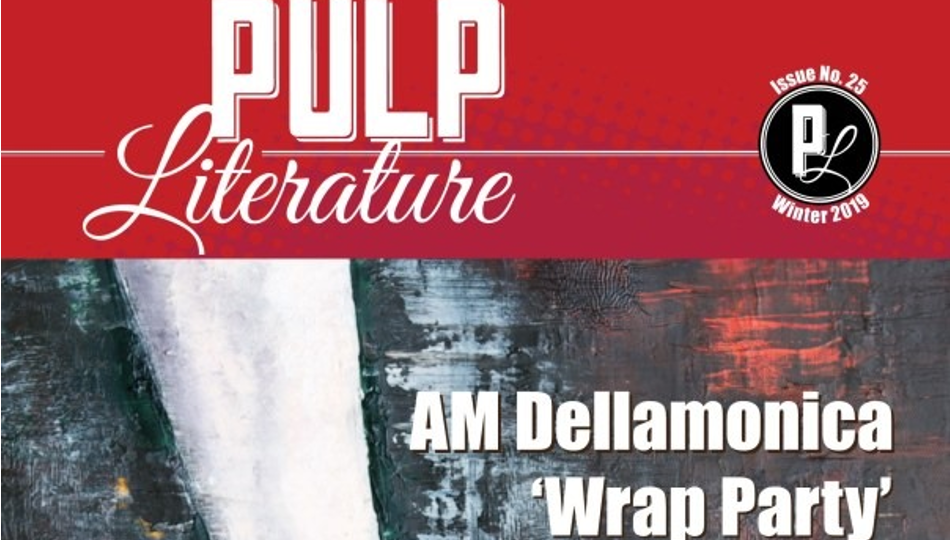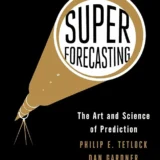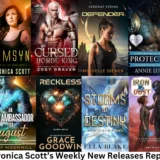Do you remember when Star Wars used to be fun?
It was a long time ago, in a very different world. The original trilogy had been and gone, but there were no prequels nor sequels. The original fanbase had yet to grow old, while the producers were not under attack by conservatives (who wanted nothing to change) and progressives (who wanted to turn the films into social justice thinkpieces). Star Wars was big, yet it was not super-big. And then everything changed. The Expanded Universe – the real Expanded Universe (now called Legends) – began. And it started with Heir to the Empire. To me, they are the real Episodes 7-9 of Star Wars.
 There are very few authors, I’m sorry to say, who really get Star Wars. The Expanded Universe is a mixed bag because many authors didn’t understand how the saga actually works. But Timothy Zahn is one of the very few who do. Star Wars is science-fantasy, instead of straight science-fiction; Star Wars is a universe where a single man, Jedi or not, can make the difference between victory or defeat. Cool tricks outweigh realism. And The Thrawn Trilogy (Heir to the Empire, Dark Force Rising, The Last Command) shows precisely how it works on a far greater scale.
There are very few authors, I’m sorry to say, who really get Star Wars. The Expanded Universe is a mixed bag because many authors didn’t understand how the saga actually works. But Timothy Zahn is one of the very few who do. Star Wars is science-fantasy, instead of straight science-fiction; Star Wars is a universe where a single man, Jedi or not, can make the difference between victory or defeat. Cool tricks outweigh realism. And The Thrawn Trilogy (Heir to the Empire, Dark Force Rising, The Last Command) shows precisely how it works on a far greater scale.
Zahn did have other advantages, of course. He didn’t have to worry – yet – about an unpleasable fanbase. He didn’t have to struggle with post-prequel canon, which was pretty dire. And, I think, he was able to draft out a plot and keep a reasonably deep level of control instead of having directors and producers switched, seemingly at random. And, perhaps most importantly of all, he didn’t have to worry about budget. He didn’t have to put his story on the big screen.
The Thrawn Trilogy is set roughly five years after Return of the Jedi. The Empire has fallen, replaced by a New Republic. The war appears to be over, until the enigmatic Grand Admiral Thrawn returns from the Unknown Regions to take command of the Imperial Navy and begin retaking territory. Allying with the Dark Jedi Joruus C’baoth, Thrawn started a campaign against the New Republic that halted its expansion, then brought it terrifyingly close to defeat before a series of tiny mistakes eventually set up their defeat. Against this background, a cast of characters – some old, some new – fight to save their dream of a better future while struggling to come to terms with the legacy of the past.
Thrawn himself is a very different villain to the Emperor and Darth Vader. An alien in a xenophobic military – the book hints he’s actually half-human, later books suggest that was a lie to smooth his way into the Imperial Navy – Thrawn is cool, collected and not given to rash moves. He studies his enemy’s artwork to gain insight to how they think, then tailors his tactics to cultural blindspots within their mentalities. And, unlike many others, he’s not too proud to back off when he’s losing. He’s very much an expy of Sherlock Holmes, with Captain Pellaeon serving as the Watson. (And Pellaeon himself is a decent person even if he serves in the Imperial Navy.) In some ways, it is Thrawn rather than our heroes who is the rebel.

He stands in stark contrast to the other major villain, the clone C’baoth. C’baoth is insane, although this isn’t clear at first. Being a clone, he’s prone to mad swings veering between depression and complete lunacy. It’s clear, as the series progresses, that C’baoth is growing more and more powerful – and dangerous, to the point he takes control of everyone on a star destroyer. Thrawn and C’baoth are both planning to kill the other by the time nemesis finally catches up with them.
The trilogy, at least at the start, remains focused on the core trio of Luke, Han and Leia. Luke is trying to set up a whole new Jedi order, Han is working to ally with the smugglers and convince them to help the New Republic, while Leia – pregnant with twins – is an ambassador as well as serving on the governing council. This trilogy doesn’t put any of the main characters down, acknowledging their strengths and skills as well as their weaknesses and using the former to best advantage. The books also draw on the past of all three characters; Luke and Leia discover that their link to Darth Vader brings allies as well as enemies, while Han has a tie to a former rebel who eventually rejoins the New Republic.
Zahn also needs to be credited for how he introduces two more characters who have become fan favourites, Talon Karrde and Mara Jade. They’re both introduced early in Heir, but are not brought front and centre until later in the book, allowing the reader to skip over them at first and then go back when they start to interact with the main characters. (This stands in stark contrast to the sequel trilogy.) Mara is an awesome character, but – unlike Rey – her awesomeness is demonstrated and explained very quickly. She also grows and develops as the story progresses, moving from a burning desire to avenge her former master by killing Luke to eventually developing a respect for him. It is no surprise that, in a later book, she and Luke get married and have a son. Again, Zahn weaves a plotline through all three books that works very well.
The homage to the original trilogy don’t stop with the characters. Star Wars is very fond of awesome ideas like the Death Star, ideas that are cool but impractical. Thrawn doesn’t build anything so large – information is his real superweapon – but he is fond of cunning tactics that make use of tricks like cloaking devices without being hampered by their limitations or messing around with pieces of well-understood technology to produce new effects. He also makes good use of C’baoth as a coordinator, as well as a weapon. It makes him very hard to defeat, even though many of his tactics are of strictly limited use.
The books also mirror the original trilogy. Heir ends with victory for the good guys, and seemingly wraps up many of the plotlines, but the bad guys are still out there. Dark Force Rising ends with the bad guys winning a victory that may prove decisive. The Last Command suggests the bad guys have the edge, only to be brought down by their own failings. And it works.

Given that the trilogy is a set of books, Zahn is able to touch on issues that were largely skipped over in the movies. On one hand, Zahn gives the impression of a universe with a genuine history (although much of his history, such as the Clone Wars, would be ruined by the prequels) and a complexity the movies couldn’t acknowledge. He details the problems with forming a new government, seen through the actions of characters with minds and ambitions of their own now the war appears over (they’re wrong) and attitudes that are distinctly alien.
The books come to a fitting conclusion. C’baoth is brought down by his own madness, by his inability to see beyond his predictions. Thrawn is beaten by the combination of a series of tiny misjudgements and little things he didn’t know and a certain amount of bad luck. The New Republic and the Smugglers Alliance tricked each other, but that worked in their favour as it allowed them to combine forces at the best possible time. And he didn’t know, apparently, that Luke and Leia were Vader’s children. It bit him when he was least expecting it.
It is hard not to look at these books and not think this is how to do it. Zahn shows us how to write Star Wars – and also, in more general terms, how to craft a space opera trilogy that actually fits together perfectly. Zahn did a lot of careful plotting and it shows. He never loses sight of the overall plotline, even when sweeping from the corridors of power to wretched hives of scum and villainy; he plays with seemingly-minor events that build into a final crescendo, allowing brave characters to shape the course of entire battles and heroism to take the lead. He also made good use of the main characters (he certainly never degrades them), using them to introduce many of the newcomers rather than just starting the story with them. Even Thrawn is used sparingly, at least at first. The post-Disney Thrawn books lack the mystery of the original and are weaker for it.
Zahn also avoids many of the mistakes of the prequels and sequels. There no ‘kid-friendly’ characters that drive older fans into paradoxes of rage (one fan claimed Lucas had raped his childhood, another went to the extreme of producing an edited version without Jar-Jar), nor is there a petty villain in the form of Ben Solo or a romantic plot that makes very little sense and plotlines that get rewritten or simply forgotten with each successive book. Zahn knew his audience had grown up and produced a trilogy for them, rather than trying to bring in new readers. And so he succeeded where Disney failed.
I will never understand why Disney didn’t turn these books into movies. They are as close to perfect as humanly possible, building on the past instead of throwing it away. Disney could have easily introduced diversity and made the fans love them for it, just by filming Mara Jade and Thrawn as well as recasting the older characters. (Hamil is too old to play Luke now, but he’d make a great C’baoth.)
At the very least, they could have studied these books to find out what worked.









